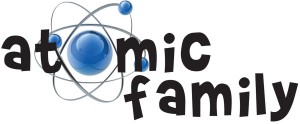Good news, vegans! You can finally branch out from that soysage and Oreo diet you’ve been on and dig into a meaty entrée rich in B vitamins, protein and Oxytocin: placenta!
Frying up your child’s placenta (or better — eating it raw) may not sound appetizing to you, but those who have eaten their placenta insist that nothing satiated their ravenous hunger after birth like their placenta. And folks from a myriad of childbirth practices are now suggesting, in growing numbers, that the benefits of placenta consumption are too significant to be dismissed. The hormones and nutrients in the placenta are purported to prevent post-partum depression and all variations of the baby blues, stop bleeding, speed healing, increase milk supply, and re-energize mothers after labor.
According to Sarah Griffith, a local mother who ate the placenta after the birth of her third child, the benefits of eating the placenta were “immediate and obvious.” She intended to eat only one small piece, but found the experience to be so perfect for what she needed that she ate more. “I just didn’t expect it to be as pleasant as it was — as satisfying. As soon as I took one bite and swallowed it, I immediately had a shot of energy.”
And although Sarah wasn’t sure what to expect, she feels that the placenta is exactly what her body needed after birth. “It was amazing. After the birth, I was starving and craving the perfect food. What was amazing is it felt like the perfect thing to eat, like it was what I was supposed to eat.”

Placenta prints are most often made by midwives and doulas by pressing the cleaned placenta against a heavy-weight paper.
She likened the taste and texture to sashimi or a really good quality, medium rare steak: easy to chew and clean tasting. The remaining placenta was prepared and frozen in smoothies that she credits for her notably speedier and more pleasant recovery. And although there are plenty of recipes online for preparing the placenta (mmm, lasagna), smoothies seem to be the preferred method of raw placenta ingestion because its taste is undetectable.
For the faint of heart who would rather not chow down on fresh afterbirth, placenta encapsulation is an option. According to Placenta Benefits, a placenta encapsulation service and training program, “the benefits of placenta ingestion can be enjoyed far longer after labor” (and without the meaty aftertaste) by having one of their certified placenta encapsulation specialists prepare your placenta.
Sonya Brown, the only certified placenta encapsulation specialist serving the state of Georgia, says she can’t share the secret tricks of the trade, but that the training has enabled her to prepare fresh or immediately frozen placenta in capsule form.
According to Sonya, “the average placenta will yield anywhere from 100-200 capsules, which can then be ingested at a recommended dosage according to the new mother’s needs.” The bonus of placenta encapsulation is that some of the capsules can be frozen and saved for when the mother enters menopause, with those same feel-good hormones and nutrients helping to ease the challenges of “the change” far after the pains of labor are (haha) forgotten.
If you are far too practical to dispose of your placenta before its uses have been exhausted, but still aren’t ready to commit to eating it, there are other options. Paula Chambers of Alpha Team K9 Search and Rescue says that although they are usually offered much more placenta than one search-and-rescue training facility can use, they do utilize donated placenta to train their dogs to find missing people. Because the dogs need to learn to sniff out human tissue, placenta is one way the dogs can practice finding people. A rather noble use of the placenta, even if all that Oxytocin is going to waste.
If none of these handy uses for placenta have moved you, there is always the teddy bear made from dried and cured placenta in a jar.
But more common uses of the placenta include “placenta prints” and planting. Prints are most often made by midwives and doulas by pressing the cleaned placenta against a heavy-weight paper.
And although different cultural tales abound of the power of the placenta and how it is best harnessed and protected after birth, most local moms who have used the placenta after birth report blessing their baby’s spirit by burying the placenta and then planting a tree or garden in the soil above it.
One placenta’s travels
Although I didn’t eat my daughter’s placenta after her birth in July 2008, I did save it to bury under a new tree to protect Lula Bell’s spirit whenever we bought a house.
My husband is from New Zealand, where this practice is common. My daughter was born in New Orleans, where it is not — they thought we were nuts.
Worse, when we evacuated New Orleans for eight days for Hurricane Gustav six weeks after her birth, we had to bring the placenta with us.
Twelve hours later (the trip to Atlanta is much longer when most of the city of New Orleans is headed the same way), our hotel room’s mini-fridge freezer wouldn’t accommodate the large, quickly defrosting container. The concierge was concerned about the safety and liability of keeping the now sloshy, bloody container in the main freezer for the hotel.
Luckily, our friend, who was living with her mom at the time, agreed to sneak it into the back of her mother’s freezer if we promised never to tell.
Lula Bell’s placenta went back in the cooler for the trip back to New Orleans. Semi-thawed, it was returned to the freezer for a few short months until we decided never to evacuate again.
It spent another long trip east in the cooler before chilling for six months in our freezer in lovely Decatur. We now own our first home in East Lake and will get the frostbitten hunk of meat out of our freezer for good come spring.















